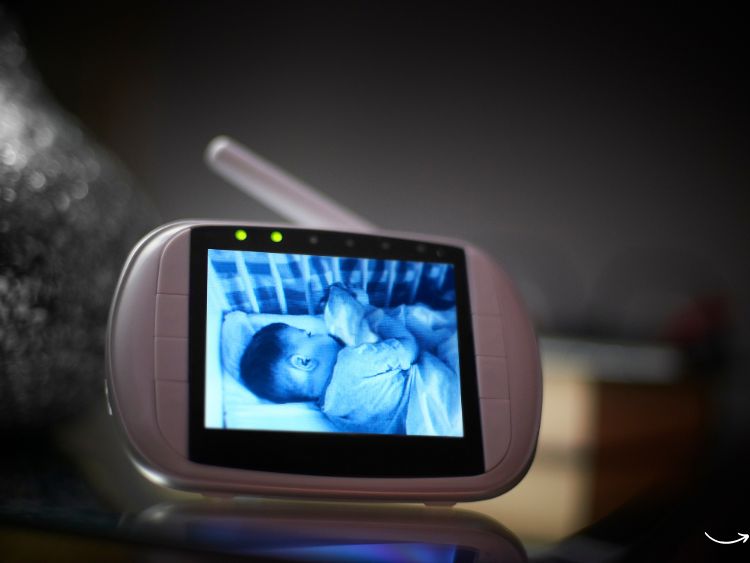Ever wondered how parents keep an eye on their baby while tackling their to-do list? Enter the baby monitor, a game-changing gadget that gives parents peace of mind while their little one sleeps soundly. Whether you’re a first-time parent or upgrading your baby gear, choosing the right baby monitor can feel overwhelming. But don’t worry—I’ve got your back! This guide will help you navigate the world of baby monitors so you can make the best choice for your family.
What Is a Baby Monitor, and Why Do You Need One?
A baby monitor is essentially your extra set of eyes and ears, allowing you to check on your baby from another room. With features like video feeds, two-way communication, and motion detection, these devices can help ensure your little one is safe and sound, even when you’re not right next to them.
Benefits of Using a Baby Monitor
- Peace of mind: You’ll know if your baby needs you without hovering over the crib.
- Flexibility: Handle household chores or work from home while staying connected to your baby.
- Sleep tracking: Some advanced monitors offer insights into your baby’s sleep patterns.
- Health monitoring: Certain models can track breathing, heart rate, or room temperature.
Types of Baby Monitors
When it comes to baby monitors, one size doesn’t fit all. Let’s break down the main types:
1. Audio Monitors
The OG of baby monitors! These devices let you listen to your baby’s sounds, alerting you when they’re crying or fussing.
- Pros: Budget-friendly, simple to use, long-range connectivity.
- Cons: No visual feed or advanced features.
2. Video Monitors
These come with a camera and a screen, allowing you to see and hear your baby in real-time.
- Pros: Visual assurance, often includes night vision.
- Cons: Pricier than audio monitors, needs more setup.
3. Smart Monitors
Think of these as the Tesla of baby monitors. They connect to your smartphone and often include advanced features like sleep tracking, breathing monitoring, and notifications.
- Pros: Packed with tech features, highly customizable.
- Cons: Expensive and sometimes overcomplicated.
4. Wearable Monitors
These track your baby’s vitals through a wearable device, such as a sock or clip.
- Pros: Health insights, great for parents of preemies or babies with medical conditions.
- Cons: Can cause unnecessary stress with false alarms.
Features to Look for in a Baby Monitor
Not all baby monitors are created equal. Here are some must-have features to consider:
1. Range
How far can you roam while staying connected? If you have a large home, prioritize a monitor with a long range.
2. Battery Life
You don’t want your monitor dying in the middle of the night! Look for models with rechargeable batteries or long-lasting power.
3. Night Vision
Most babies sleep better in the dark, so night vision is a game-changer for video monitors.
4. Two-Way Audio
This lets you soothe your baby with your voice without entering the room—a lifesaver during those “almost asleep” moments!
5. Smartphone Compatibility
Want to check on your baby from your phone? Look for a smart monitor with app support.
6. Encryption
Privacy is key. Ensure your monitor uses encrypted connections to prevent unauthorized access.
Tips for Choosing the Best Baby Monitor
- Set your budget: Monitors range from $30 to over $300. Decide what features you’re willing to pay for.
- Consider your lifestyle: Are you tech-savvy, or do you prefer simplicity?
- Check reviews: Learn from other parents’ experiences to avoid common pitfalls.
- Test the range: Ensure the monitor works in all areas of your home.
Baby Monitor Safety Tips
Keeping your baby safe is the whole point, right? Follow these tips to maximize safety:
- Place the monitor out of reach: Avoid strangulation hazards by keeping cords and devices away from the crib.
- Secure your network: If using a Wi-Fi monitor, set a strong password for your home network.
- Check placement: Position the camera for a clear view of the crib but not directly over it.
FAQs About Baby Monitors
- What’s the best baby monitor for a large house?
Look for monitors with a range of at least 1,000 feet or Wi-Fi-enabled options for unlimited range. - Do baby monitors need Wi-Fi?
Not all do. Audio and basic video monitors work independently, but smart monitors require Wi-Fi for app features. - Are baby monitors worth it?
Absolutely! They provide peace of mind and allow you to multitask while ensuring your baby’s safety. - Can I use a baby monitor for twins?
Yes! Many models offer split-screen features or allow multiple cameras for monitoring more than one child. - How long should I use a baby monitor?
Most parents use them until their child transitions to a toddler bed, around 2-3 years old.
Summary
Choosing the right baby monitor boils down to your family’s unique needs. Whether you opt for a simple audio device or a high-tech smart monitor, the key is to find one that helps you feel confident and connected to your baby. With the right monitor, you can focus on what matters most—creating a loving, safe environment for your little one.
Authoritative Links
- Consumer Reports: www.consumerreports.org
- Baby Gear Lab: www.babygearlab.com
- American Academy of Pediatrics: www.aap.org






